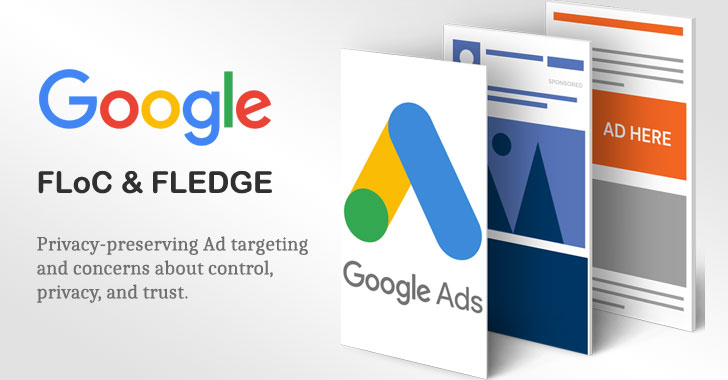
So, you have decided to launch your own digital advertising strategy. What's next? This article will guide you through each step of the process from selecting your channel to researching your audience. This article will teach you how create a customer experience and split test your strategies. You'll then be able to determine if the new strategy is effective for your brand. You're not the only one who isn't satisfied with your new strategy. There are many other businesses who have had the same question: "How do I start a digital marketing strategy?"
Researching your audience
In creating a digital marketing strategy, research your audience to better understand their needs. Quantitative research involves analyzing large numbers and creating statistical results. You can create an email campaign to target a specific audience by identifying their interests and pain points. To determine their purchasing habits, you can also examine their purchase history. Then you can tailor your marketing message for the right audience segment.
A successful digital marketing strategy requires you to get to know your audience. Without thorough research, it's impossible to understand your audience's needs and wants. You can identify their needs and provide personalized content by conducting research. By doing research, you'll also be able to predict their needs and become more effective in your marketing. Here are some ways to research your audience.
Interviews: Use surveys to get to know your audience better. Interviews can be conducted with customers, published customer reviews on social media and sent to existing customers. These surveys will provide valuable insights into the personality of your audience. You can then create your digital marketing strategy. While it's essential to research your audience, it's equally important to create compelling campaigns. This will help you engage your audience, and increase sales.
Segmentation: This allows you to target your audience by understanding their lifestyle and preferences. Segmentation allows you to communicate more effectively with your target audience and make it easier for them to engage in meaningful ways. For example, Adidas sent a gender-specific email, while the clothing brand categorized its audience by gender. Customers buy jeans in large numbers, so a survey asking them how they rate the retailer would result in an average rating of 8/10.
Choose your channels
The key to promoting your product/service is choosing the right digital marketing channels. Your goals, competition and budget will all influence your choice. Different channels will produce different results. Make sure to choose carefully and find the one that works for you. You will need to choose which channels you use to determine the types of content you want and how your ads are formatted. Although content marketing remains the king of marketing, and will remain relevant, it is essential to reach your audience.

The goals of your company will determine the decision to use a specific digital marketing channel. Your long-term and short term goals should be determined. One long-term goal is to increase revenue 20 percent over the next two year. Another short-term goal is to generate 400 qualified leads in six months and increase website traffic by 70% within eight months. So that you can decide which channels will work best, it is important to clearly identify your short-term (and long-term) goals.
Before you decide which channels to use, make sure to analyze the effectiveness of each of them. Each channel is unique and has its strengths and weaknesses. It is important to identify the type of content you need for each channel as well as its cost. You should make sure you have all of your budget available before you begin using new channels as part of your digital marketing strategy. Facebook or Twitter is the best way to generate buzz.
Customer journey creation
A customer journey map is an essential element of any digital marketing strategy. These maps map the customer's path from decision to action. The customer journey map serves many purposes. For example, it can show the customer's journey from the initial stage of the sales funnel up to the moment when they become lifelong customers. The customer journey maps can also be helpful in identifying areas that can be improved.
A customer journeymap is basically a prospect’s journey from inquiry to purchase. It assists marketers in mapping out the questions and pain points that they encounter as they go. The higher-funnel levels are designed to increase awareness and create interest. The final stages are dedicated to building brand loyalty. This begins with awareness. You can achieve this through social media, word-of-mouth, search engine suggestions or blogs.
After researching and learning about a brand, potential customers begin the information-gathering phase of the customer journey. They don't necessarily know you, but they do know what they want. This phase of the Customer Journey should include content that assists customers in making informed decisions. To help customers overcome any remaining obstacles during the purchasing process, brands may offer a free trial period.
By understanding the customer journey map, marketers can target their advertising efforts. Each stage of the customer's journey should have a unique buyer persona. Identifying each stage's goals will help marketers adjust their marketing campaigns accordingly. Marketers can also use customer journey maps to help understand their customers better. This helps them identify the motivations behind each stage of their customer's decision-making.
Split testing your strategy
Split testing in various areas of your digital strategy can make your business more profitable. Split testing can be used to improve headlines, page copy and button text. Images, social sharing buttons, email advertising, call to actions, and social media buttons are just a few examples. Below are some test scenarios. Split testing is useful for determining which marketing tactics will increase sales and profitability. Use the right sample size. Split testing should occur regularly.
Split testing can help you determine if certain marketing strategies are working or not, and where to make changes to maximize their effectiveness. Split testing allows you to track whether your online marketing strategies are generating leads or bringing in returns. Split testing lets you test out different versions of a website or specific elements. You can use the split test results to determine if your website makes money. Once you've identified which variants generate more leads, it is possible to make adjustments in your digital marketing strategy.

ClickFunnels' ad library allows you to test 6 different versions one advertisement. Facebook is another good place to look for split testing ideas. You can find many examples of Facebook ads and copy them to see which ones perform better. Landing pages are also ideal locations to test split tests. Split-testing can also be done on landing pages. Moving the CTA down from the fold increased conversions 30% while removing the CTA from the landing page led to cart abandonment rates dropping by 33%.
Split testing plays an essential role in conversion optimization. Split testing refers to dividing traffic between two groups, the control group and the variant. Split testing means that you split traffic so 50% of the traffic sees the control variant and half the variant version. Splitting traffic into equal segments is used to show the variant version to each segment in a multivariate experiment. Split testing can enhance your digital marketing strategy and you will be amazed at the results.
Measuring its success
Measuring the results of your digital marketing strategy is a key step in creating a successful one. This can be accomplished in many ways. Other metrics can be used to measure the effectiveness of a campaign, such as the number of pages viewed. These metrics can be used to measure the effectiveness of a marketing campaign, as well the success of a particular marketing initiative.
To measure the success and effectiveness of your digital marketing strategies, you need to track certain key performance indicators (KPIs). KPIs are quantifiable metrics that track how your marketing team performs against a specific goal or objective. These targets may be high-level, or low-level. These KPIs are useful in identifying the success of a campaign, as they provide a specific level of accuracy that can be used as a guide for future campaigns.
It is essential to establish clear goals for measuring your digital advertising strategy. What number of visitors did your website receive? What content did your website encourage? Are your email campaigns generating more sales? Are you getting new business? What percentage of visitors purchased after they read an email? These are just some examples of the data you should track in order to assess whether your digital marketing strategy works. It all comes down to your objectives, your goals, as well as the digital marketing strategy.
FAQ
How much does SEO cost?
SEO is a long-term investment and you will not see immediate returns. Remember that search engines rank websites higher if more people find them.
Many factors go into determining the price of each service, such as keyword competitiveness, location, audience size, and competition.
What is a blog post?
A blog is a type website that lets visitors share content. Blogs typically contain a mixture of written posts, images, and both.
Bloggers write blogs about their own experiences, interests, and opinions, but some bloggers choose to write about topics related to their business or career instead.
Blog owners can start blogs using a very simple program called a blogging platform'. There are hundreds of blogging platforms available. Tumblr (WordPress), Blogger, and Tumblr are the most popular.
Blog readers enjoy reading blogs. Keep your writing interesting. Make sure you are familiar with your topic before you write.
Provide useful information and resources to aid readers in understanding the subject. When you write about improving your website, don’t just tell people to look at other businesses’ websites. Instead, you should give steps for creating a successful website.
It's also worth noting that the quality of content within your blog plays a large part in whether people enjoy reading it. No one will read your blog if it isn't well-written or clear. Poor grammar and spelling are also a problem.
It's easy not to get distracted by blogging. Be consistent with your posting schedule. Only publish content once per day. It shouldn't feel like a chore to maintain a blog.
How long does SEO take to get traffic?
It usually takes three to four months for traffic generation via SEO. However, it depends on a lot of different variables, which include:
-
Content quality
-
Backlinks
-
Targeted keywords
-
Competitor rankings etc.
SEMrush gives you a free trial if you are just starting out in SEO. You can monitor all aspects of your SEO campaign with them, including competitor research and backlink profile, top pages and local listings, organic traffic stats, reports and more.
How much does SEO cost?
SEO costs vary based on your company's size, industry, and budget. A few hundred dollars may suffice for smaller companies, while large companies will need thousands. If you're unsure how much SEO will cost, you can use our free SEO calculator to estimate what it will cost.
Where can I find my keywords
Consider what type of products or services your company offers and who your ideal customer might be before you start looking for standard terms. Once you have a list of phrases, you can use Google Keyword Planner to find out what phrases people are searching or directly go to search engines such as Bing, Yahoo!, and DuckDuckGo.
What is an SEO Campaign and How Does It Work?
An SEO campaign is an ongoing series of activities to increase visibility for a website or domain name in search engines such Google, Bing, Yahoo!, and others. These activities include optimizing page titles, meta description tags and URL structure.
Keyword research is a key part of SEO campaigns. This involves identifying keywords that are likely to increase organic traffic. After keywords have been identified, optimization must be done throughout the entire website, starting at the homepage and ending on individual pages.
Statistics
- 64% of marketers actively create SEO campaigns because they help hit multiple key performance indicators (KPIs), including increasing traffic, helping your site rank for relevant keywords, improving your conversion rate, and much more. (semrush.com)
- If two people in 10 clicks go to your site as a result, that is a 20% CTR. (semrush.com)
- : You might have read about the time that I used The Content Relaunch to boost my organic traffic by 260.7%: (backlinko.com)
- 93%of online experiences today begin on search engines. (marketinginsidergroup.com)
- Which led to a 70.43% boost in search engine traffic compared to the old version of the post: (backlinko.com)
External Links
How To
What you should know about duplicate content, SEO and other topics
Search engines and webmasters both face the problem of duplicate content. There are two types of duplicate content; internal and external. If multiple pages in a site have identical content, an internal duplicate is created. External duplicates occur when a page contains identical information to another URL.
Internal duplication refers to pages that contain identical text or images. Poor copywriting skills are responsible for this type of duplication. Poor copywriting means you're not creating unique content for each webpage. When you do this, you create internal duplicates.
External duplication is when a single page contains identical information to other URLs. You can create external duplication if you have a product category page that lists all your products and one page that lists all your other products.
Google doesn't penalize websites if they have duplicate content. However, it does penalize sites that attempt to manipulate its algorithm to rank higher. If your website contains duplicate content, make sure it isn’t manipulative.
Link building is the easiest way to modify Google's algorithm. Link building refers to creating links between your site and other websites. These links can make your website appear unnatural and could cause Google to lower its value.
There are several ways to avoid link manipulation:
-
Avoid low-quality, spammy backlinks
-
Use anchor text that is relevant to your website.
-
Create unique content to each page of the website.
-
High-quality content.
-
Good domain names are important.
Avoid worrying about duplicate content. Instead, make sure you have unique content on each page of every website. This will ensure that you rank higher on search engine result pages.